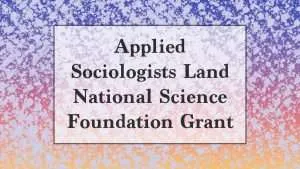A Day for Remembering Canada’s Cultural Genocide of Indigenous People
“I could understand my traditional language, but I couldn’t speak it at the time. And one of the things that we had to do was watch the supervisor strap our friends with a strap that was made out of a fire hose. And it would not just be on the hands, so we had to watch him. And to this day, I can’t speak our traditional language, and I think it’s because of watching my friends getting strapped for speaking their language.”
John Jones, Indigenous Residential School Survivor
September 30th, National Day for Truth and Reconciliation in Canada may not ring any bell in ones’ ears yet, but to those thousands of Indigenous families who had to pass through the agonizing process of cultural assimilation by residential schools in Canada for more than one hundred years will never forget the pains of being stripped of ones’ cultural identity and language in a broad daylight. On this note, I have no doubt whatsoever that you will be at the frontline of this reminiscence by the end of this article.
Cultural identity is absolutely central to the field of sociology, and it is important to define the concepts of culture and identity in a sociological way. Culture is part and parcel of all that we do, all that we are, all that we can and might become. Culture is the way of life of a group of people whose social lives happen to be structured in a particular way. Identity means knowing who you are. Therefore, cultural identity is the identity of belonging to a group. It is part of a person’s self-conception and self-perception and is related to nationality, ethnicity, religion, social class, generation, locality, or any kind of social group that has its own distinct culture. In this way, cultural identity is not only the characteristic of the individual but also of the culturally identical group of members sharing the same cultural identity or upbringing.
Also, language is one of the main components of cultural identity. Language is developed from the wants of the people who tend to disperse themselves in a common given location over a particular period. That is, the way people speak with peers, family members, authority figures, and strangers, including the tone and familiarity are all part of ones’ identity because it promotes connections and roots to ones’ ancestors and cultural histories. Therefore, the above cultural identity and ancestral language were deprived of Indigenous children residing in Canada between 1894 to 1997 due to a system of schooling endorsed and sponsored by the Canadian government’s Department of Indian Affairs and administered by Christian churches.
Hence, National Day for Truth and Reconciliation in Canada was established to honor the survivors and to also raise awareness about the terrible legacy of the residential schools’ assimilation process in Canada. An over-100 years process that is also referred to as the sad chapter of Canada’s history. In those years, some 150,000 Indigenous children were ripped from their families and forced to attend church-run residential schools, where many suffered physical and sexual abuse, malnutrition and neglect which resulted in the death of thousands of children. Justice Murray Sinclair, the chair of the Truth and Reconciliation Commission believes that at least 6,000 aboriginal children died while in the residential school system and thousands of children went missing. However, on June 24th 2021 Ian Austen and Dan Bilefsky revealed in the New York Times that the recent discovery of massive unmarked graves that are mainly indigenous children at the site of a former residential school in the province of Saskatchewan (Marieval Indian Residential School, about 87 miles from the provincial capital, Regina), This discover offers chilling evidence that many of the missing children may have died at these schools because 751 remains of indigenous children were found weeks after 251 was found in another school.
The Synergy between Cultural Genocide and Indian Residential Policies
In 2008, the Canadian state allowed the formation of a National Truth and Reconciliation Commission to investigate forced assimilation practices committed across Canada’s 150 residential schools, where an estimated 150,000 Indigenous kids did their time between 1883 and 1996. Eventually, the commission found that the practice of the Canadian government with the church amounts to “cultural genocide.” According to the commission’s president, more than 10,000 kids went missing after they ended up in those residential schools which also conforms with the public admittance of Duncan Scott (a high level Indian Affairs Agent). In 1914, Scott publicly admits in his essay “History of Canadian Indians 1867-1912,” that “it is quite within the mark to say that fifty percent of the children who passed through these (IR) schools did not live to benefit from the education which they had received therein.” Then, one may begin to ask what is cultural genocide?
Cultural genocide is the systematic destruction of traditions, values, language, and other elements that make one group of people distinct from another. Without any doubt, the activities of Canada’s residential schools wiped out the lives, traditions, languages and values of thousands of children. For instance, John Jones, a survivor of a residential chool lamented that “I could understand my traditional language, but I couldn’t speak it at the time. And one of the things that we had to do was watch the supervisor strap our friends with a strap that was made out of a fire hose. And it would not just be on the hands, so we had to watch him. And to this day, I can’t speak our traditional language, and I think it’s because of watching my friends getting strapped for speaking their language.”
Analytically, the main aim of the residential school was to strip indigenous heritage from the children by taking them away from their parents and environments which represent the embodiment of their culture. Not only that, but they were also severely punished and humiliated when exhibiting any of their cultural identity in the residential schools. In 1883, a member of the federal cabinet insisted that in order to educate them properly, they must be separated from their families because that was the only way to civilize them. To buttress this fact, Egerton Ryerson, in his 1847 report for Indian affairs stated that “their education must consist not merely training of the mind but a weaning from the habits, feelings of their ancestors and the requirement of the language, arts and custom of the civilized world.”
Indeed, the residential school system victimized Indigenous children significantly by eliminating them from their families, depriving them of their ancestral languages, and exposing many of them to physical and sexual abuse. It was also documented that students were subjected to forced enfranchisement as “assimilated” citizens that removed their legal identity as Indigenous people. Disconnected from their families and culture and forced to speak English or French, students who attended the residential school system often graduated being unable to fit into their communities but remaining subject to racist attitudes in mainstream Canadian society.
Deductively, it can be proved that the Canadian government and the church at that time considered the Indigenous cultural identities and languages as uncivilized and savage which must be wiped out at all costs. For instance, Raymon Merson, 62 years old recounted his terrible experience in a documentary titled “Stolen Children | Residential School Survivor Speaks out.” He said, “I got strapped, my tongue was pulled out and pinched when I speak my language.” The cultural assimilation was so important that the parents were never informed about the demise of their wards. Alice Lydia explained her most terrifying moment in the documentary when she said, “A little girl died beside me, she must have been six, I was scared because the parents were not there and they were never informed.”
These inhumane activities were perpetrated in the name of cleansing Indigenous people of their assumed “savaged cultural identity and language” which was regarded as “uncivilized” or “problematic.” Perhaps, that is why Duncan Campbel Scott, Deputy Superintendent of Indian Affairs explained in 1910 that “Indian children in the residential schools die at a much higher rate than in their villages but this does not justify a change in the policy of this department which is geared toward finding a permanent solution to Indian problems.” The “Indian problems” being referred to is nothing other than their cultural identity and languages because in 1920 when Scott was tabling a new Government Bill for the Compulsory residential school attendance of all Indian, Métis and Inuit children, he emphasized his desire “to get rid of the Indian problem,” also saying “I do not think as a matter of fact, that this country ought to continuously protect a class of people who are unable to stand alone. That is my whole point. Our objective is to continue until there is not a single Indian in Canada that has not been absorbed into the body politic, and there is no Indian question, and no Indian Department, that is the whole object of this Bill” (D. C. Scott, 1920).
Historically, the Indigenous people of Canada were the only people living across today’s Canada. However, because of laws like the Gradual Civilization Act and Canada’s residential schools that were implemented to impose their political project of assimilation, Indigenous peoples’ representation in the population has decreased to a mere 5% of the country’s total population.
In conclusion in June 2021, a bill creating a statutory holiday to commemorate the tragic legacy of residential schools in Canada received royal assent after passing unanimously in the Senate. The bill creates a statutory holiday for employees in the federal government and federally regulated workplaces. Canadian Heritage Minister Steven Guilbeault says the objective is to create a chance for Canadians to learn about and reflect on a dark chapter in their country’s history and to commemorate the survivors, their families, and their communities, as called for by the Truth and Reconciliation Commission and Indigenous leaders.







